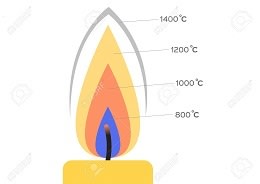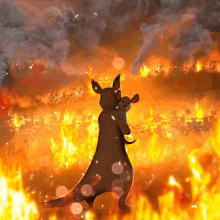Introduction
It was Paleolithic period where the fire was first discovered thanks to early humans and stones(Spark from stones turned into the fire). However, throughout the era's applications of fire is rocketing in various areas from domestic needs to rocket sciences. Additionally, we can't deny the fact that most of the world disasters are also caused by fire accidents. So, This post describes the fundamental theory of fire.
What is Fire
Fire is an exothermic reaction where something like Wood, gasoline is shined with something like matches, steady light or friction in the presences of atmospheric air, generally known as combustion. The fire thus emits subsequent energies like light, heat and smoke(volatile gases).
Characteristics of fire
characteristics will be varied based upon the nature of materials, for instance, the heat factor in the wood or willow will be slightly less than dry grass. Not only the Heat factor but also the colour of flame will be varied between materials.
Fire is fast and furious😎
Fire has a serious pace of 6 MPH in the forest and 14 MPH in grasslands, once they caught up the situation will be furious.
Different levels of temperatures
Starting from the combustion point to peak point of the flame temperature is not the same it will be varied throughout. Starting at the Combustion point or Blue Zone the temperature recorded at ~800°, Moving to the Non-luminous zone and dark zone recorded at ~600° and ~1000° respectively, Finally going top luminous zone and luminous veil or peak flame point are noticed to be having ~1200° and ~1400° independently.
if you are a good observer the different zones of temperatures in the flame are having different colours 🧐. Guess what 🤔, due to the continuous chain reactions and strong bonding🤝 with atmospheric oxygen and wood's hydrocarbons the flame keeps on burning. So, the blue or green flame is due to the copper reaction while flickering red colour is because of strontium finally sodium gives the orange colour to the flame.
Types of Fires
Fires are classified based upon there nature of materials into different classes. let me elaborate one by one. Class A fires are grouped based on general usable things in daily life like wood, paper, clothes and plastic and can be easily dealt with water or wet clothes. Coming to Class B fires are something related to gases and lubricates. while the fires which are involved with electric appliances are classified as Class C. Class D fires are rear and formed when metal ignites.
Class E and Class F are generally related to household fires caused by vegetable oils.
Diasters😢
Although we are having a hell lot of uses with fires but there are an equal number of cases where the world witnessed numerous disasters. The disasters can be listed from leakage of LPG in the kitchens to the latest Australian bushfires. Amongst the noted fire accidents, Australian and Amazon bushfires are the nightmares for the nature to recover. consequently, an abundant species of flora🌴 and fauna🦘 whipped and burnt down to ashes.
References
https://science.howstuffworks.com/environmental/earth/geophysics/fire1.htm
https://www.insider.com/types-of-fires-and-how-to-put-them-out-2018-12







Top comments (0)